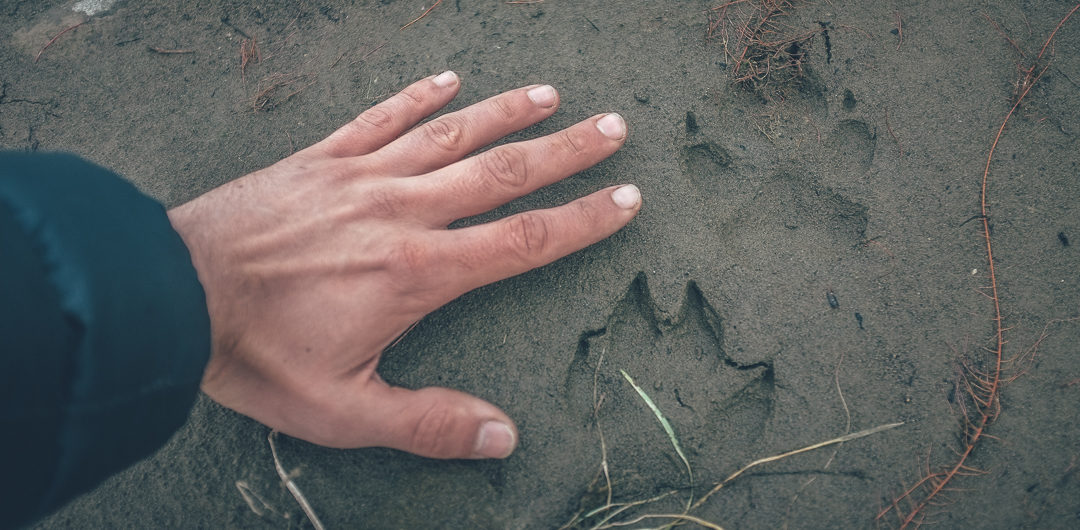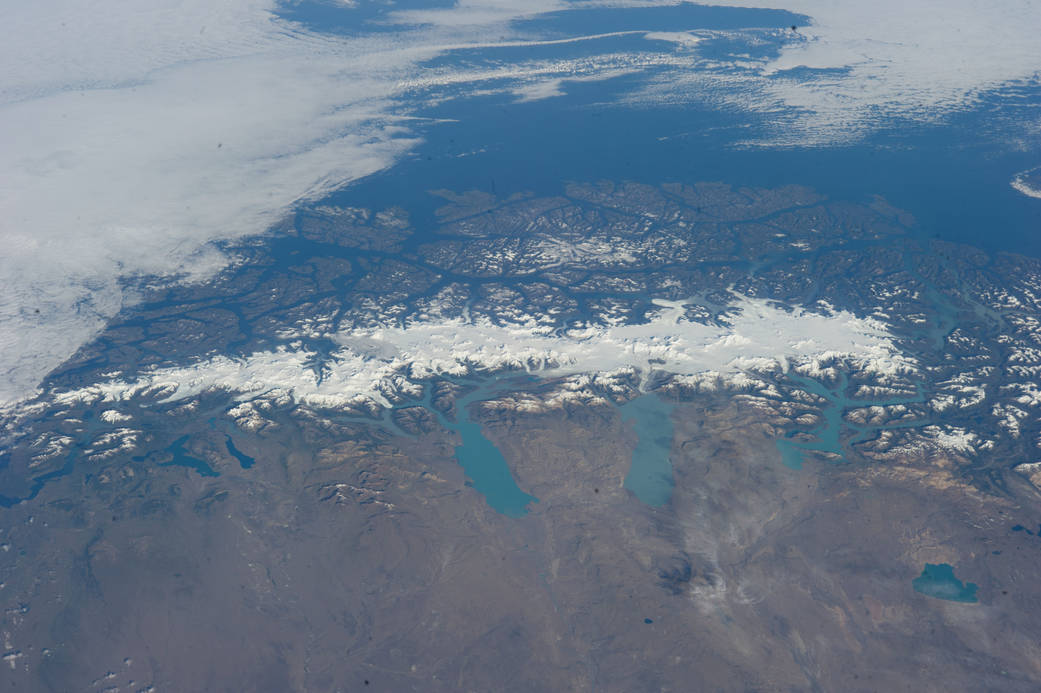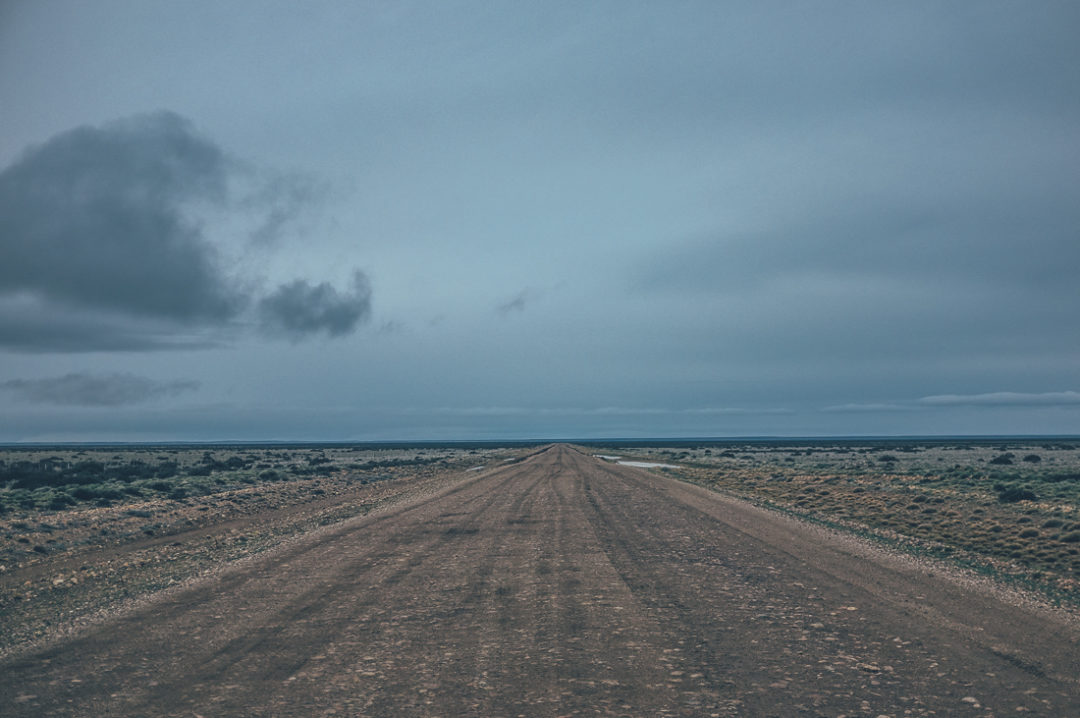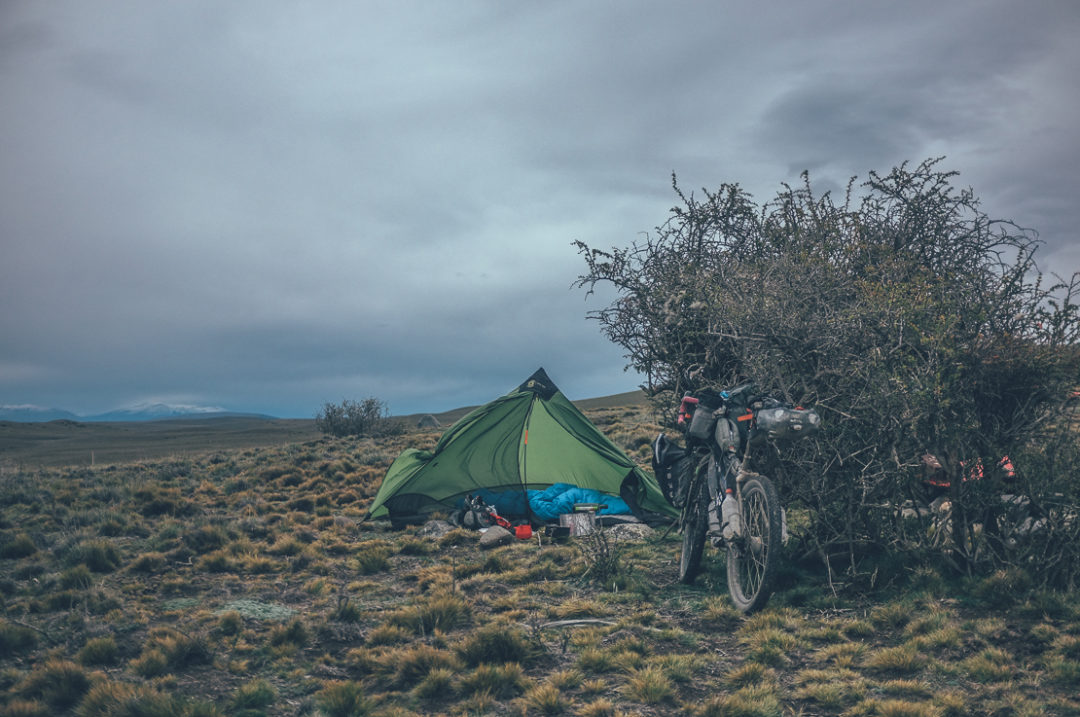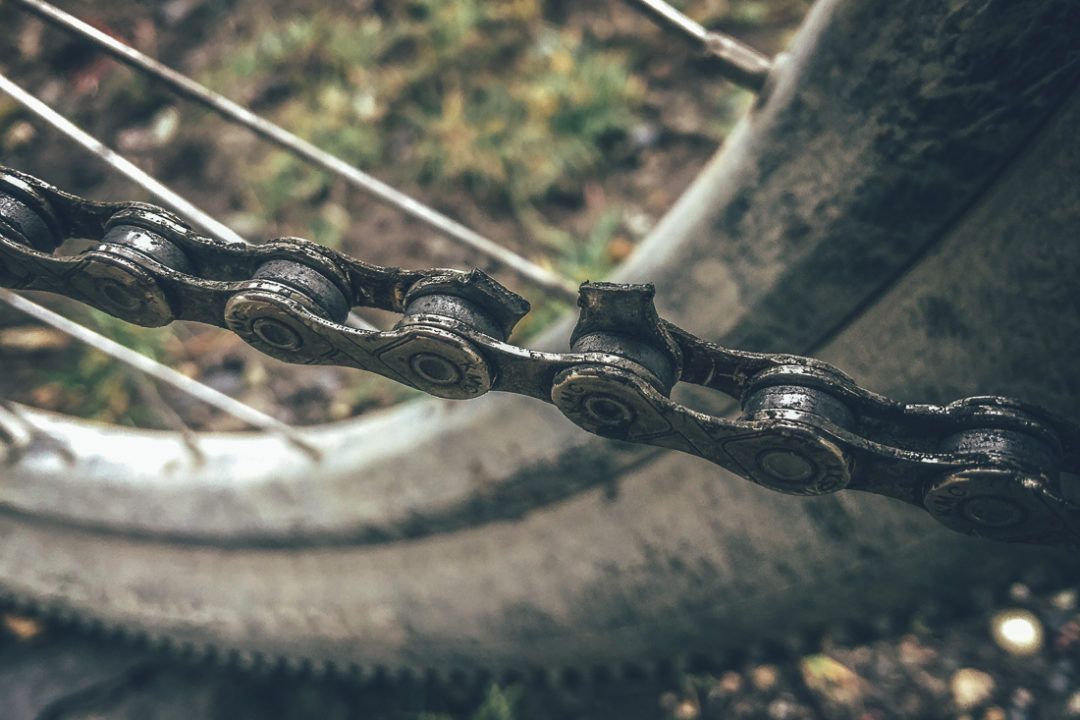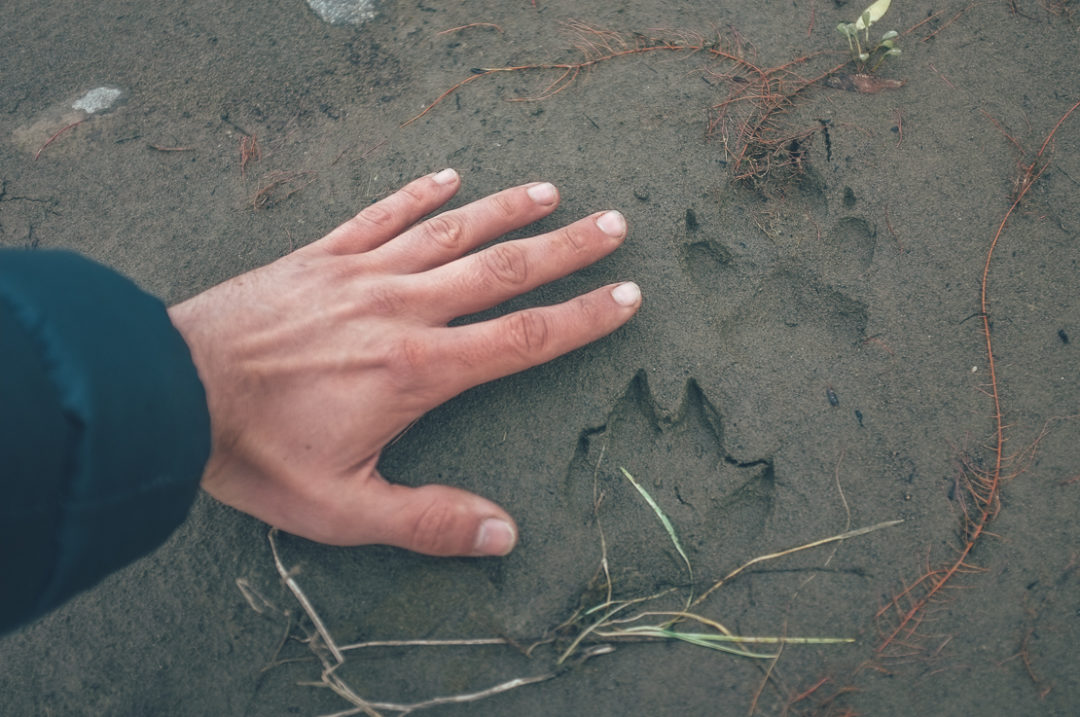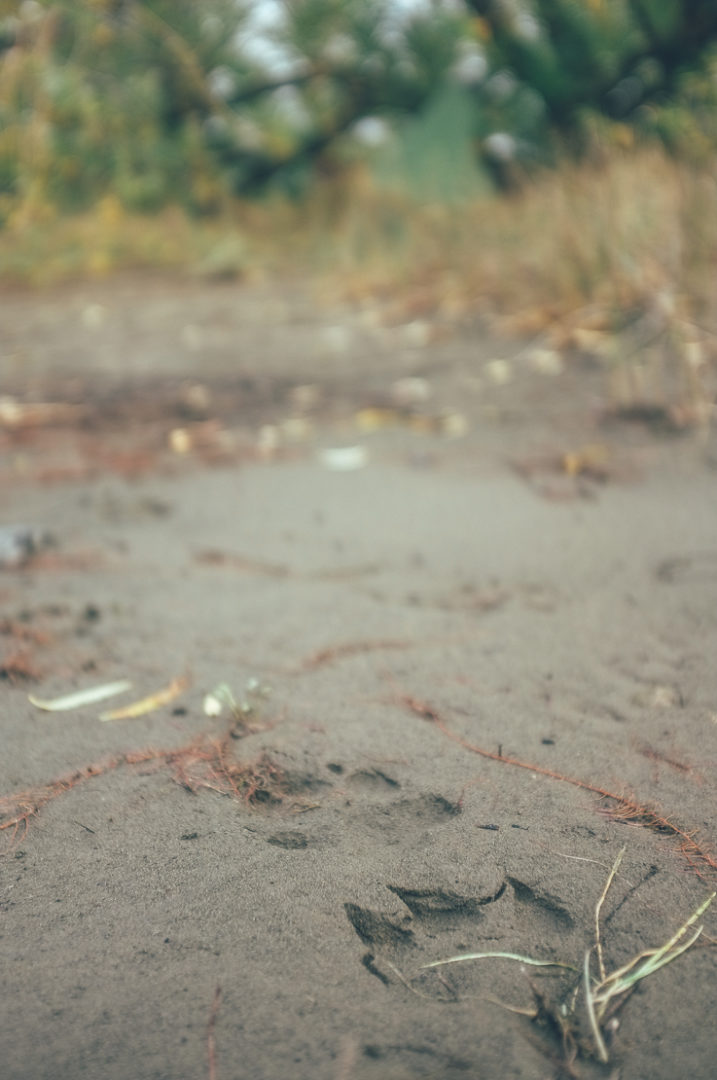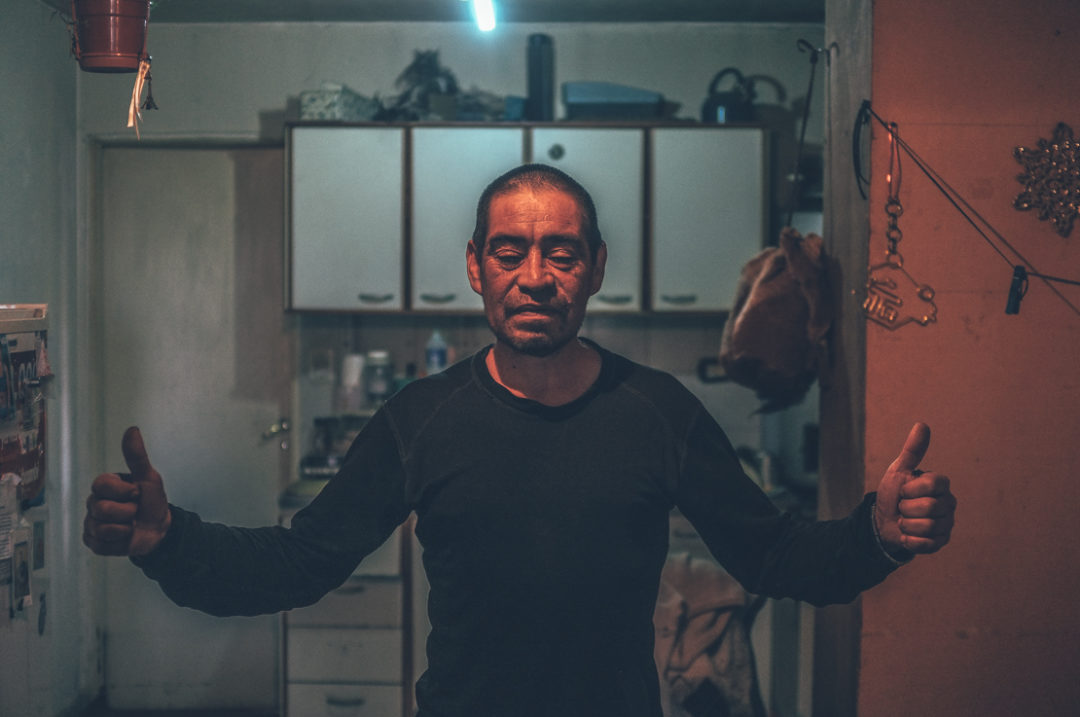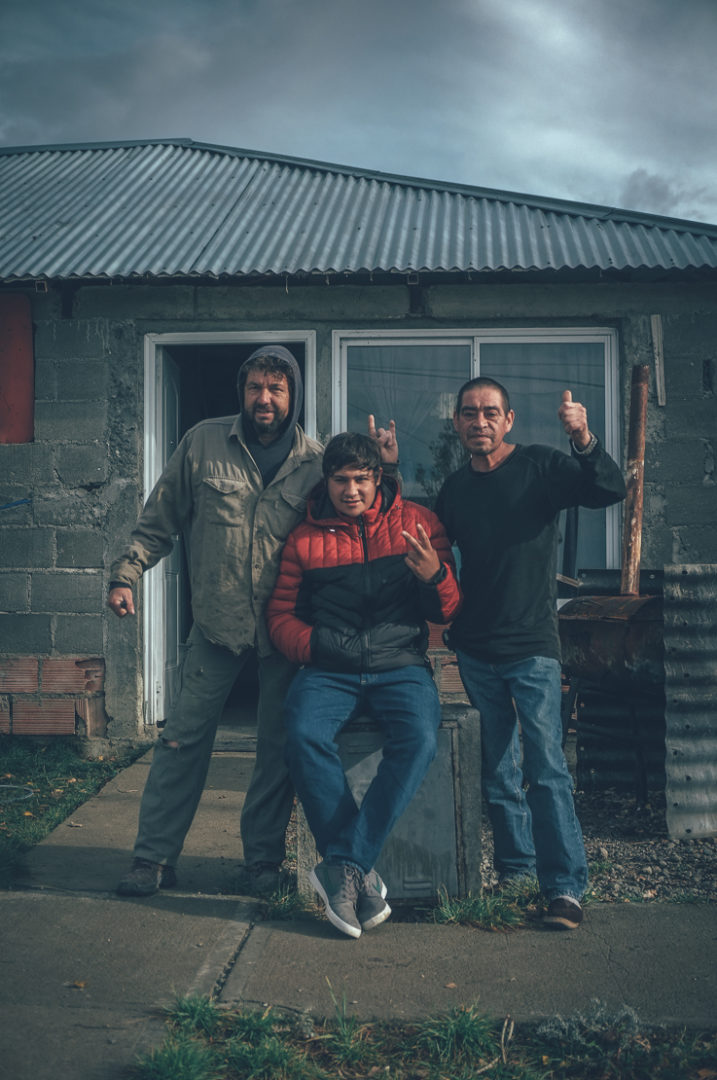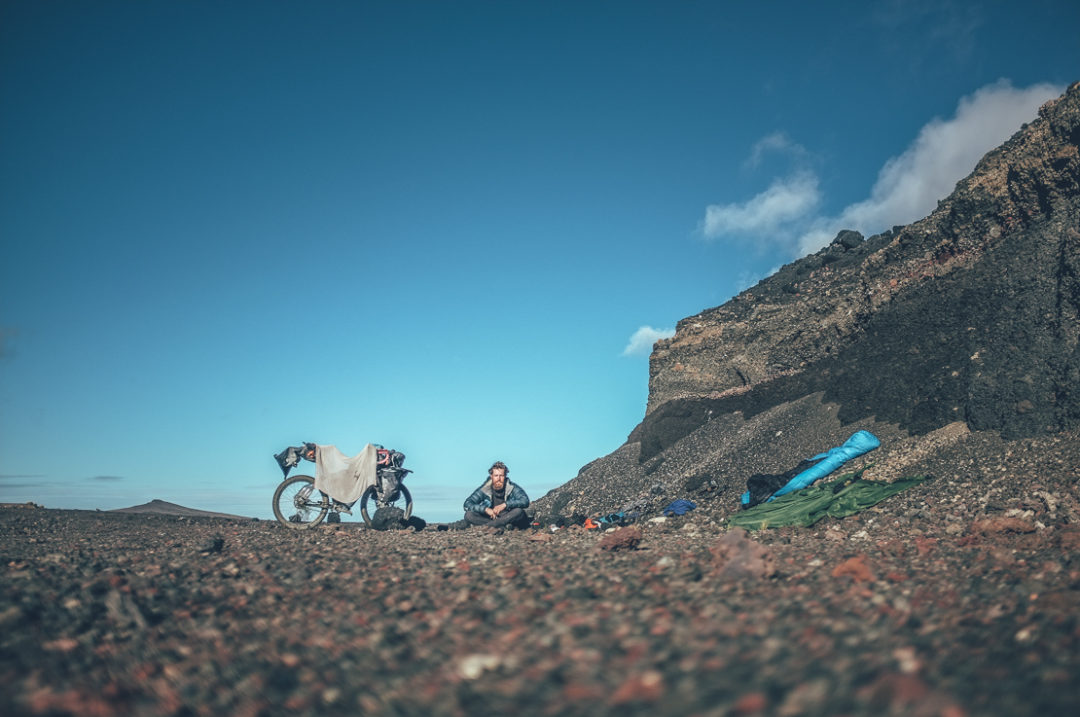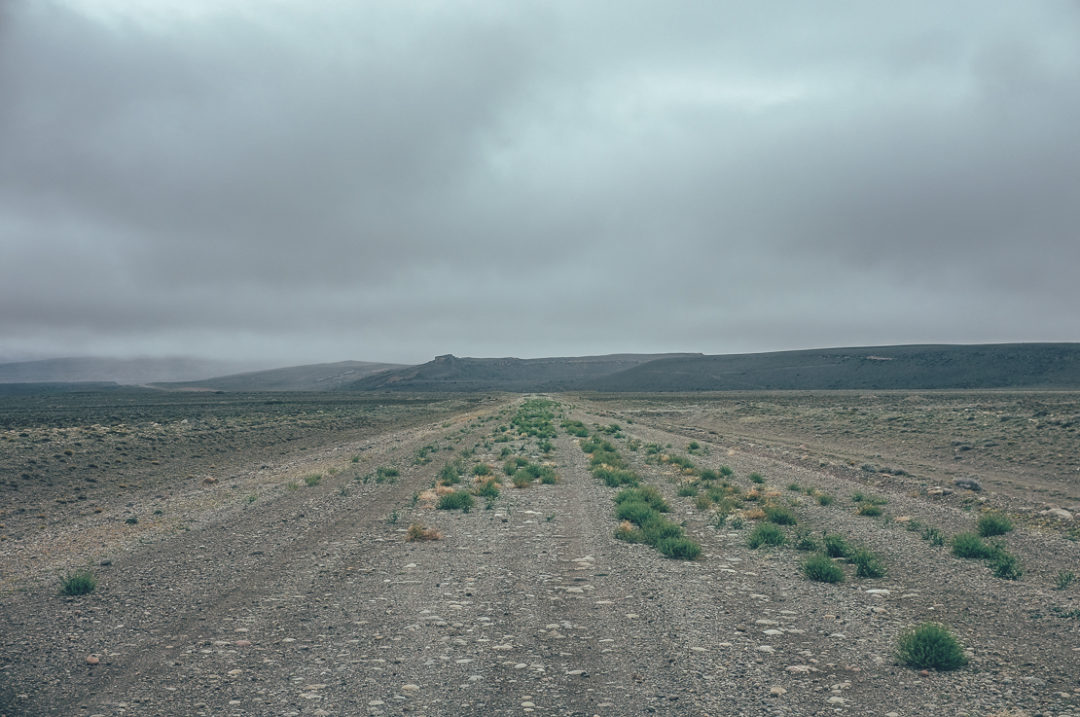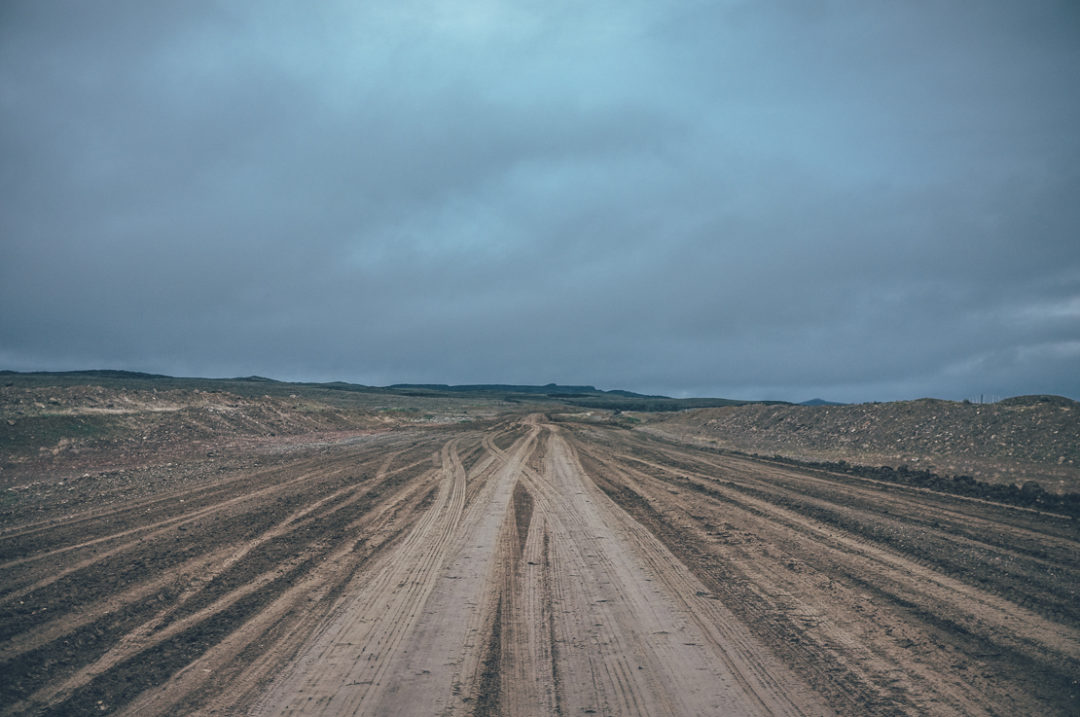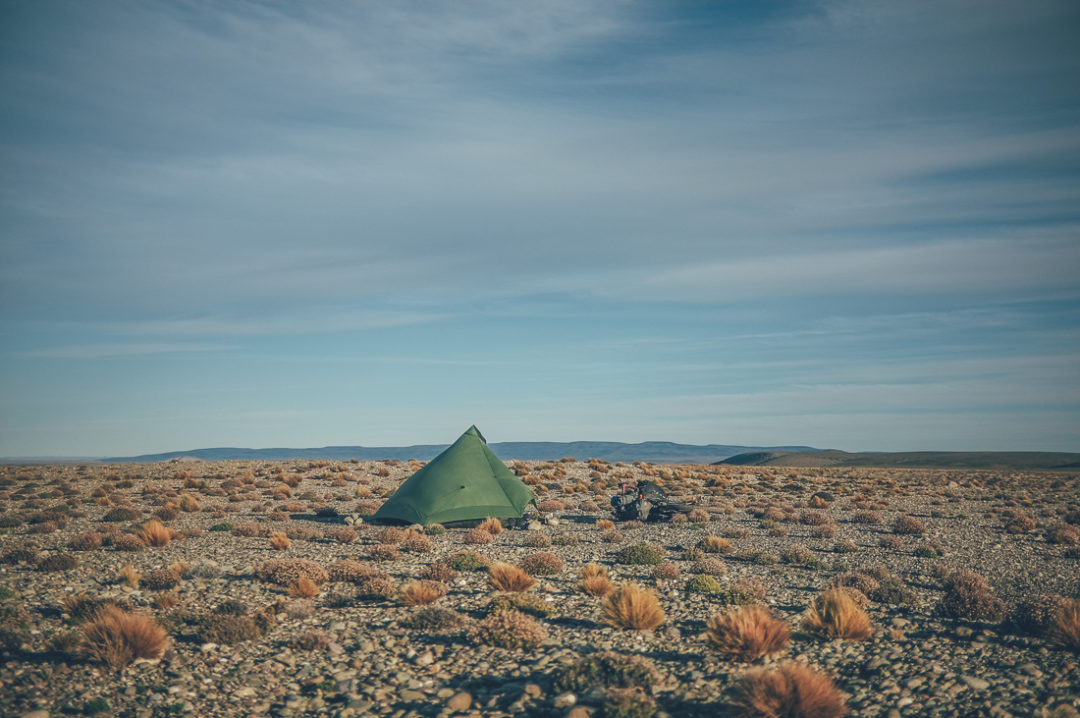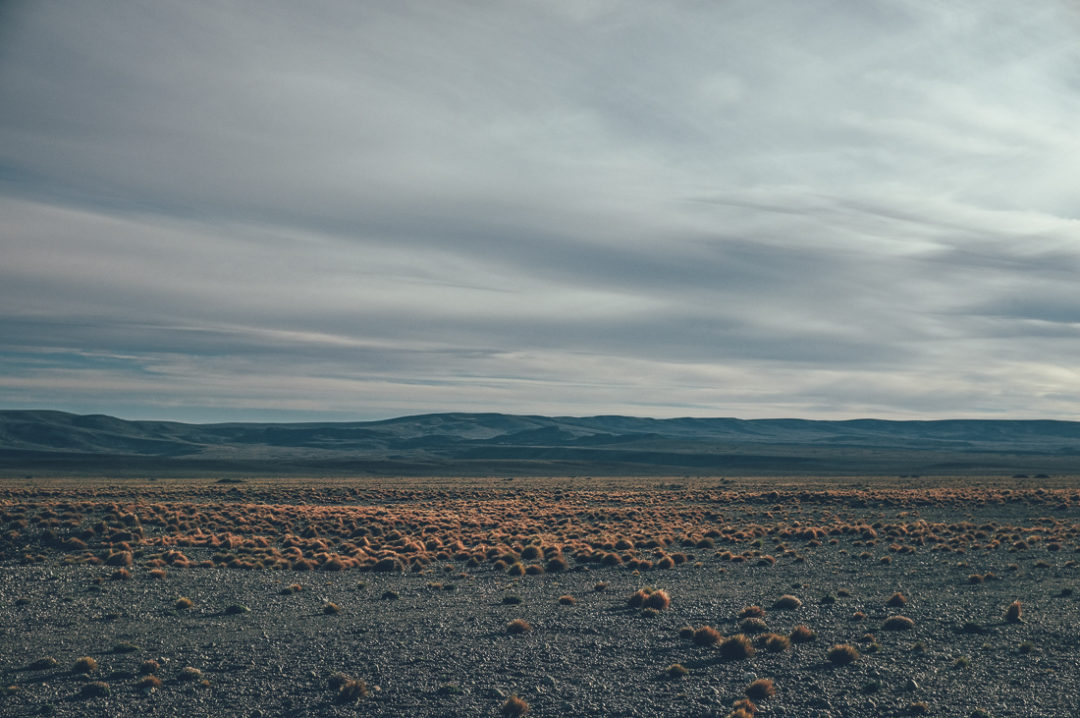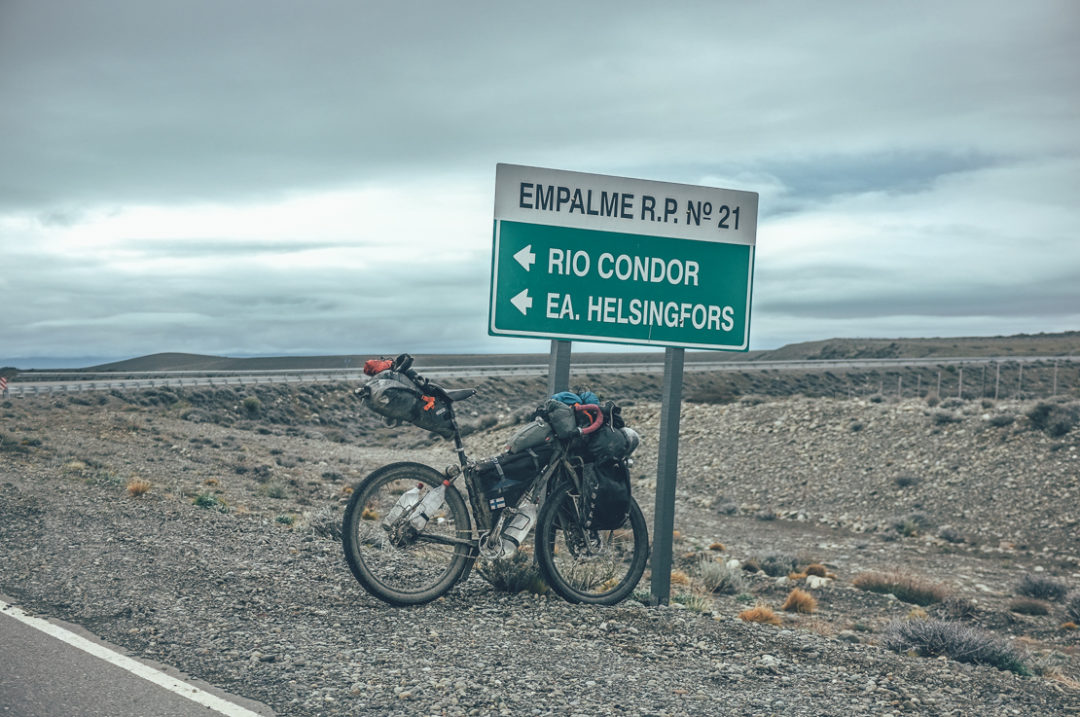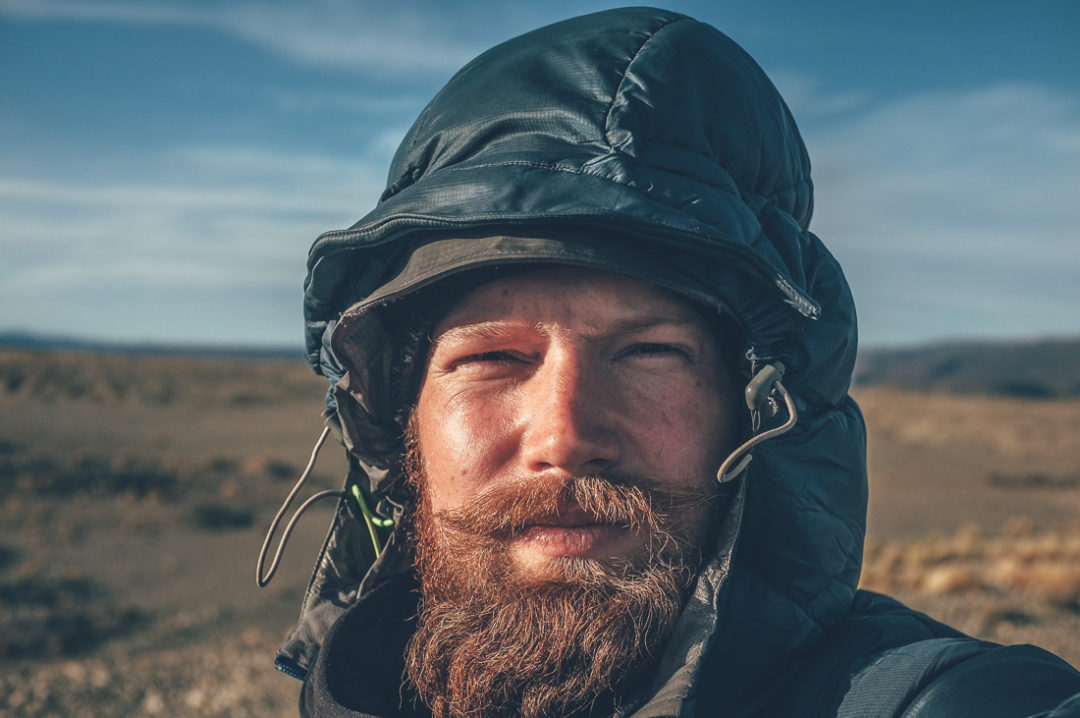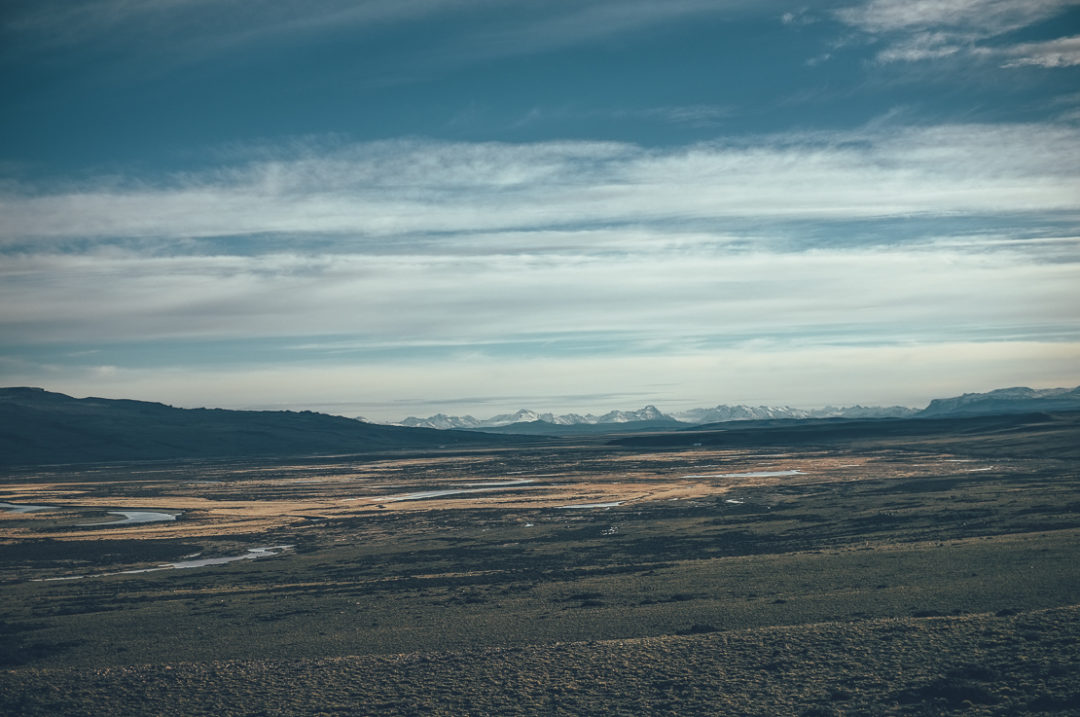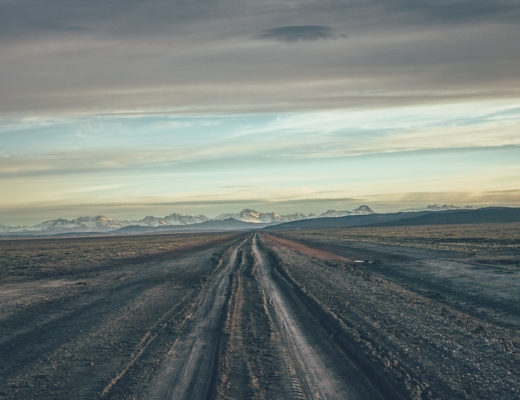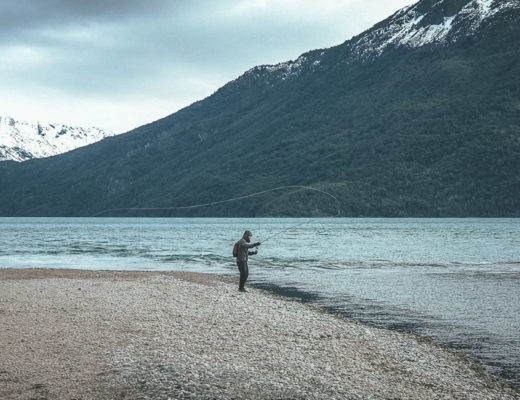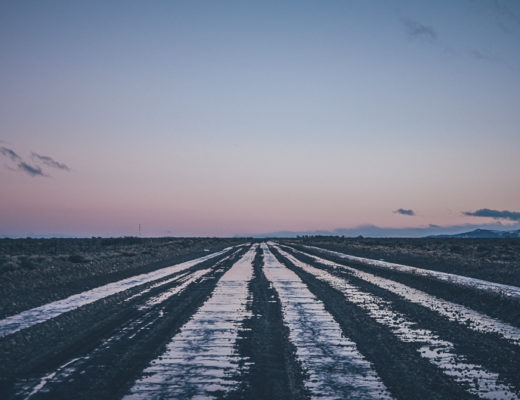Chile is divided into two parts by the Southern continental ice mass, Campo de Hielo Sur. The two parts are not connected by road. To travel from one side of the country to the other, one must either fly, take a one week ferry or make a detour through thedesert-like Argentinian steppe for over 600 kilometres. In the tourist season, there is also a scenic but pricey ferry connection across some alpine lakes connecting El Chalten (Argentina) with Villa O’Higgins (Chile). Outside the tourist season, access to the north side of the ice sheet is by the remote border station of Paso Rio Mayer. That was where I was heading to.
Southern continental ice mass, picture by Nasa.
At the border crossing of Cerro Castillo in Chile, I bought food for a week, enough to last all the way to the tiny town of Tres Lagos 300km away. I had learned my lesson in Patagonia already and did not assume that I could do more than 50km a day, if – or when – the wind picked up. The next 600km would be partly on a big, paved roads, which I had tried my best to avoid. I felt there was nothing to look forward to in the steppe, just hundreds of lonely, windy miles on the Ruta 40.
Argentinian border officials warned me not to cycle alone, because of pumas. Apparently, the top predator of Patagonia comes down to the valleys in the winter months. An encounter was certainly possible. But not cycling alone? I stared at him, wondering what he thinks I should do, with no other cyclists in Southern Patagonia during early winter. ‘Gracias por informacion’, I say.
I steer my bike north from the Argentinian border station onto a tiny gravel road, my only detour from the main route for weeks. Unsurprisingly it was extremely windy. Condors flew low in the valley searching for thermals updrafts that took them so high I could barely see them. The landscape reminded me of a desert again: smooth, rolling mountains smooth in contrast to the steep slopes on the Chilean side. I am on the steppe again.
Argentinian steppe flattens out further you get from the Chilean border.
Once on the wide, straight and baby smooth Ruta 40, it did not take long to reach the settlement of Tapi Aike, the only place in the area to get water and petrol. The petrol station keeper starteda massive generatorto power the petrol pumps. I wondered if running the generator for two minutes used more petrol than I got into my tiny petrol stove bottle. I turned north from the highway onto a gravel shortcut. There were no cars and no fences alongside the road. All expectations exceeded. At dusk I started to look for shelter from the strong sidewind, but soon give up. No such thing existed here. I kept cycling in the dark a little longer until I found a thorn bush to camp behind of. During the night, the wind turned 120 degrees and greeted me with a strong, icy headwind in the morning. Night time temperature had dropped way below zero Celsius, so the water in my bottles was partly frozen.
One of the nicer sections on my 600km loop in Argentina. Windy and chilly though in May.
My chain broke after 10km , the first time in three years since leaving Finland. The chainring and cog had been going for 26,000km at this point, so drive train problems were about due. I replaced the broken chain link and got on the bike, just to have the chain snap again after five kilometres. At least it was not raining or snowing when I fixed the chain again at 0°Celsius, the howling wind penetrating my every piece of clothing.
I broke my chain twice in a single day on the Argentinian Pampa, first time for years.
Since the border, I had not seen a natural water source and the occasional houses were far apart. My plan on the Pampa was to camp by a river whenever possible. Once I reached Ruta 40 again at sunset, the next river was still 50km away. I had eaten well just a couple of hours earlier, so I stayed on the bike three more hours and reached the river at 10pm. The water was murky and muddy, but without any better alternative I used the water anyway. The morning dawned sunny and the wind had changed direction again. I dried my sleeping bag and some other gear in the sun, the first time since leaving Puerto Natales eight days earlier.
Riding with a tailwind on a paved road feeled like cheating. I could have ridden twice the distance I did (75km), but I stopped early to enjoy a beautiful camp spot by a closed restaurant on the bank of the Rio La Leona. In the night I awoke to unfamiliar sounds . They reminded me of bird calls, high and short, coming from both sides. In the morning there were footprints in the sand just a couple of meters from my tent and a tree next to my tent smelled like cat pee. The sounds that I had heard were made by two pumas! When striking camp, I put Finnish trash metal to blast on my phone speakers to keep my neighbours at bay.
Pumas woke me up twice at night with their strange noises. Only in the morning did I realise what the source of these sounds was. During the night I woke up for a pee twice, the cats were probably in the bush evaluating which part of me to enjoy first.
A good audiobook kept my mind busy during the following day on the smooth paved road to Tres Lagos. While in shop I was approach by a drunken, but friendly, man in his 50s. Of what I understood he invited me to sleep in his house. I was very doubtful, but with a hot shower in my mind I patiently tried to understand what he was trying to tell me in Spanish. When the man left the shop for a minute for some reason, I asked the shop keeper what the deal with this guy was. The shopkeeper explained that the man likes to host cyclists and other travellers who have found their way to their small village in the middle of nowhere. The guy, called ‘Lalala’, likes to drink a lot, but other than that he was a respectable villager. Tres Lagos is a village of around 500 people, so I trusted the shop keeper’s word and accepted the offer to be hosted for the night.
When I entered the house I thought was his, the room was full of people. I had been taken to a Catholic service! Smiling I greeted all the villagers and sat down in a row of plastic chairs organised in someone’s spacious living room. Two guitars and different percussion instruments were passed amongt people in the room. Lalala got himself the biggest drum and seemed excited to start playing. I was officially introduced as a ‘Firlandia’ cyclist and a friend of Lalala. Then the service started. After 45 minutes and very passionate preaching, crying, shouting and singing, Lalala told me ‘vamos’. I felt like hugging him. We sneaked out between songs and finally headed for his house.
Once inside his ‘rancho’, as he called it, he gave me notebook full of greeting and messages from cyclists and backpackers who had stayed with him. His house mates were sober, a road work contractor and a house builder from neighbouring provinces, living with Lalala during their work in the area. Lalala gave me a plate full of ribs and a big glass of red wine while I was reading the messages of other cyclist who he had hosted. On the wall was the dried head of a full grown puma and the skull of a juvenile one. The water in the shower was as hot as I had dreamed of. I was given a room, where they were storing and cutting meat, but there was a comfy bed to put my sleeping bag on. I slept like a baby despite heavy rain hitting the steel roof and sharing the room with a carcass of a quanaco.
My friendly hosts in the village of Tres Lagos, Argentina.
In the morning Lalala tried to convince me to stay for another night, telling me that Ruta 40 is currently closed due to mud. Doubting this I told him that I would come back if that was the case. Visiting a gas station two kilometres out of town for wifi, I was told that the road would in fact be closed now. Lorries were waiting for the road to open in Tres Lagos, and on the other side of the gravel section in Governor Gregores. I spent the day catching up with the world online. I camped the night behind the gas station, spending the evening drinking cheap red wine, watching movies on Netflix and chatting with friends in Finland on WhatsApp.
The following day the first 30km of the road was paved. I wondered if the villagers had pulled my leg about the mud, but eventually the pavement ended. The mud was still partly frozen, partly dried enough by the sun the day before, so it did not stick to my tires as long as I stayed in the car tyre tracks. Riding the road was eventually a lot of fun, compared to following a white line on a flat pavement. I spent the night sheltered from the wind in a sand pit of black and red volcanic rock. I was woken from by bright sunshine, the second time in a week. I took the advantage of the situation and spread all my gear on the ground to dry. The sun felt wonderful.
Ruta 40 north from Tres Lagos was closed apparently for two days for mud after some heavy rain. Two sunny days in a row had dried it completely when I was on it.
On the way north on Ruta 40, road construction workers, who generously filled up my water bottles, brought up the topic of pumas in the area. ‘Shena de Pumas’ (full of pumas), they told me and warned me not to camp near any big rocks, steep hills or cliffs. With the last week’s puma encounters fresh in my mind, camping in that area did not appeal to me. In the evening, I rode 120km all the way to my next stock-up point, the town of Governor Gregores. I reached the town at midnight and sneaked into a closed public camp site under a gate.
In the morning I enjoyed the selection and lower prices of a big supermarket. I was able to find affordable parmesan cheese and olive oil, the two ingredients that have kept my diet of pasta eatable. Did you know that 500ml of olive oil and 120g of powdered cheese can season sufficiently 10kg of dry pasta? The shop had also the only India Pale Ale I had seen in Patagonia, and two for the price of one, so I walked out from the store with one week’s food and two litres of tasty, well-hopped ale. In the evening on Ruta 40 I managed to find an unlocked gate in the roadside fence after one hour of searching and climbed a steep hill to camp on a small plateau on the steppe. The stars were bright and the desert looked beautiful in the moonlight as I drank ice cold beer in my tent. Drinking the ale was enjoyable, but waking up five times for a pee at night in the cold less so. I woke up tired, a little hungover, a fox watching my tent 10 metres away, probably looking for a moment to scavenge the morsel of salami that I had forgotten drunkenly outside my tent.
Esteppa can be a dream come true camping wise if you manage to find a hole in the continuous cattle fence and get away from the main road.
Eight days after entering to Argentina, I reached the intersection where I would finally leave the Ruta 40 and turn toward Chile. 500km in eight days was much faster than I had assumed, but still it had felt like an eternity in that monotonous scenery riding along the highway.
Over all, my first month on the bike had been much harder than I expected. The mud and wind had slowed me down and tested me physically, but the real challenge was a mental one. I found myself questioning the whole trip a few times. I did not feel invincible and driven, like I used to during my first two years on the bike, before my break in Bali. If this was living the dream, I wondered what my dream was.
I really hoped there would be something exciting and rewarding for me on the horizon, in the direction of Paso Rio Mayer and Chile. At least the scenery looked promising.
Argentinian steppe can be really beautiful. Though you need a right mental state to enjoy it.
The change in the horizon.
The Route
The 32km gravel section starting from the Argentinian border station close to Cerro Castillo was nice, recommended for tires 2” and above due to some bumpy and soft sections. The 65km gravel road north from Tapi Aike is one of the roughest roads I have ridden on the Pampa, the bigger tires the better I would say. The last 5km before Ruta 40 coming from the south were really muddy, too ‒ the sticky type.
There is not much water in the area, so getting a full load when ever possible is advised. I carried 5 litres and ran out once, when the headwind stopped my progress. Depending on wind and rain, this route can be a bliss or a struggle. I had my fair share of both.
I have not heard of pumas attacking cyclists along this 600km route, but I guess the risk exists, especially when touring alone in the off season. Locals use imported lion urine to keep the pumas away, sold in most of the convenience stores in the area. A couple of drops around the camp should do the trick.
Based on my encounters with pumas and the recommendations of locals, avoid camping close to big rocks, cliffs and steep hills. Pumas are also reported to come down to rivers at night, but that is where the most convenient campsites are, so that is harder to avoid. Pumas are more active at night, dusk and early morning, so it is good to acknowledge that during those times chances of an encounter are higher. Pumas are rarely known to attack a human with company, so the best way to avoid a puma attack seems to be not being alone.

